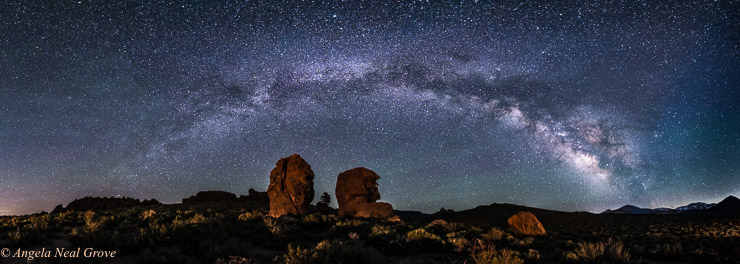
Starry Night and Summer Solstice
The Milky Way, the arc of over two billion stars which enchant us in the night sky, lured me to the Eastern Sierra Mountains this summer on a Mono Lake Star Trek. The name comes from Greek mythology when the Goddess Hera sprayed milk across the sky. In China it is called Silver River and in Africa’s Kalahari Desert it is the Backbone of Night. To me gazing at the galaxy is at once awesome, magical and humbling.
A group of intrepid photographers, led by Michael Frye, gathered at the small high desert town of Lee Vining on the shores of Mono Lake the week of the summer solstice. I happily joined this band who were crazy enough to stay up to 3:00 am to photograph planets and galaxies. The area is remote with little nightime ambient light so it is perfect for stargazers and photographers.
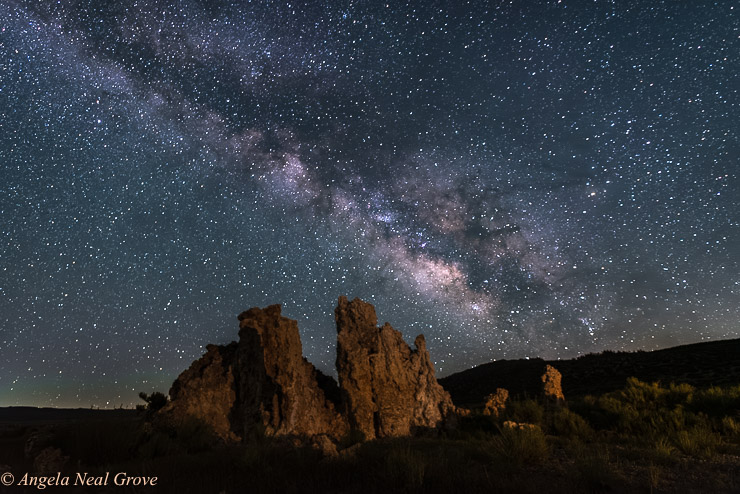
Mono Lake Star Trek
This was my second trip to stargaze at Mono Lake. Summer daytime temperatures are often in the 90’s with mild balmy nights. This year was an exception, Lee Vining had a record winter snowfall. Multiple avalanches tumbled onto Highway 395 cutting off towns where the National Guard had to airlift food and supplies. Effects of the winter lingered on. In late June I could not drive through Yosemite as the Tioga Pass through the mountains was still closed. My other option was a route through the precipitous two-lane Sonora Pass. Roads were clear but awash with meltwater and snow was heaped as high as my car in places. It was not an easy drive.
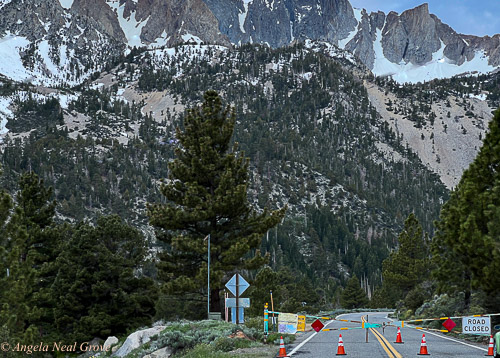
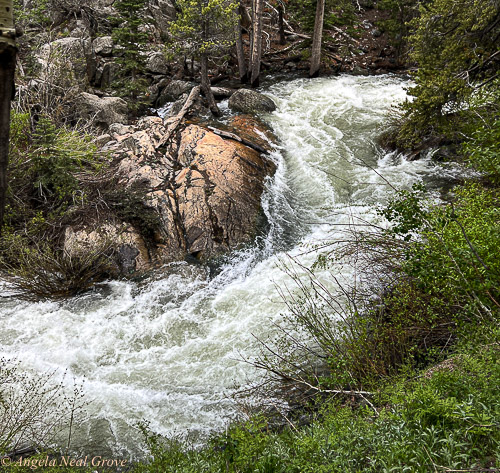
Late Spring and Cold Temperatures…
Around the lake the snow was gone. Instead there were stands of blue lupine with golden poppies and yellow mule’s ears edging the road and providing splashes of color among the grey sage brush. Daytime was chilly for late June, but it was at night that we really noticed the cold when temperatures dropped to the high 30’s accompanied by a brisk wind. Standing around with camera and tripod was cold! One night I left the group at 1:00 am as they were off to capture the Milky Way from a different angle. An intrepid group!

Star Trails
Always eager to try something new, I took two cameras and tripods with me on this starry adventure. I focused on the Milky Way over rock formations in the sage brush with one camera. Then I set my second camera up on the tripod to automatically capture star trails using a timer. The goal was to record apparent movement of stars across the sky as the earth rotates. In the northern hemisphere the celestial pole is Polaris, or The North Star, which is the last star in the small dipper. In the southern Hemisphere it is the Southern Cross.
For the star trails the camera captures multiple images over two hours. Later in the digital darkroom the images are stacked creating an otherworldly image. (Much detail for non-photographers, sorry!)
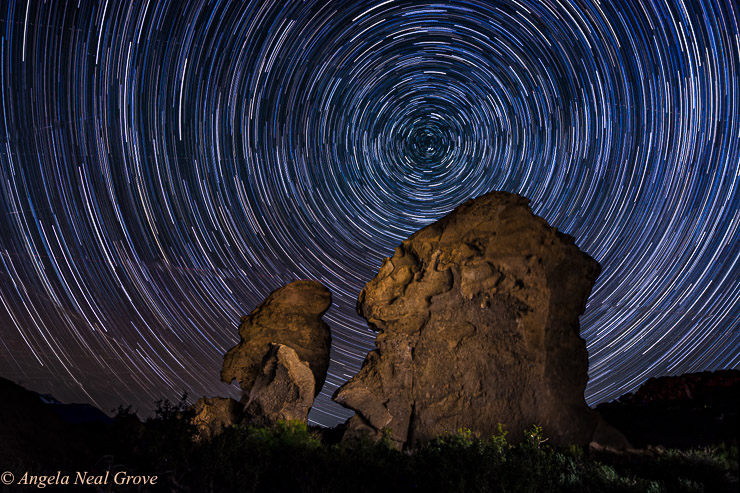
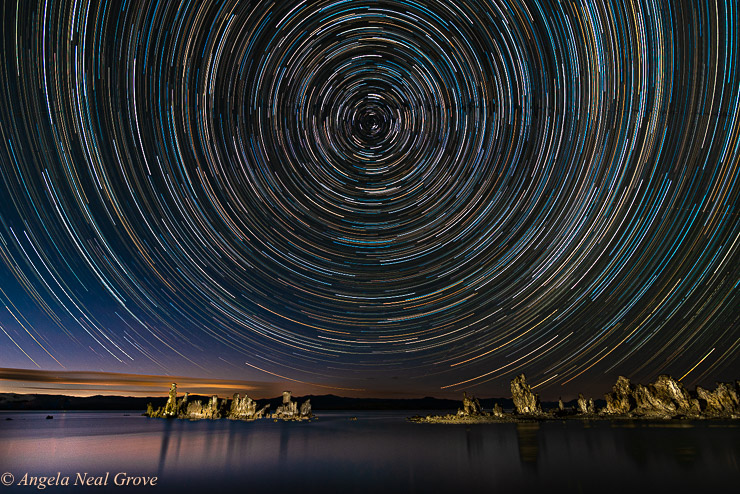
More About Mono Lake
Mono Lake is one of my favorite places, both day and night. It is an ancient saline lake twice the size of San Francisco famous for its strange stalactite type tufa towers which are fossilized springs of calcium carbonate which bubble from the volcanic depths of the lake.
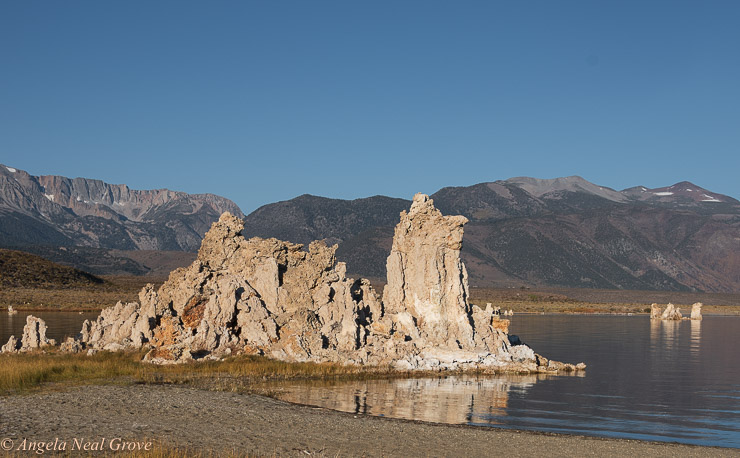
Unique Ecosystem
In Mono Lake there is no outlet for the water which drains from mountain streams as the lake is in an enclosed basin. Instead the water evaporates and causes high levels of salt to accumulate making the water alkaline. This salinity then supports a unique ecosystem. Brine shrimp which feed on algae are endemic with as many as 4 – 6 trillion living in the lake in summer months. These, along with Alkali flies on the shore, create a feast and staple for regional birds and millions of migratory species who depend on this as an important feeding and rest stop.
Phalaropes, diminutive birds from Canada, feed and rest before then flying 3-4000 miles non-stop to South America. There are gulls, cormorants, ibis, ducks and geese on the water while California Quail scurry in the sagebrush surrounding the lake. Osprey nest on the top of tufa towers away from predators.
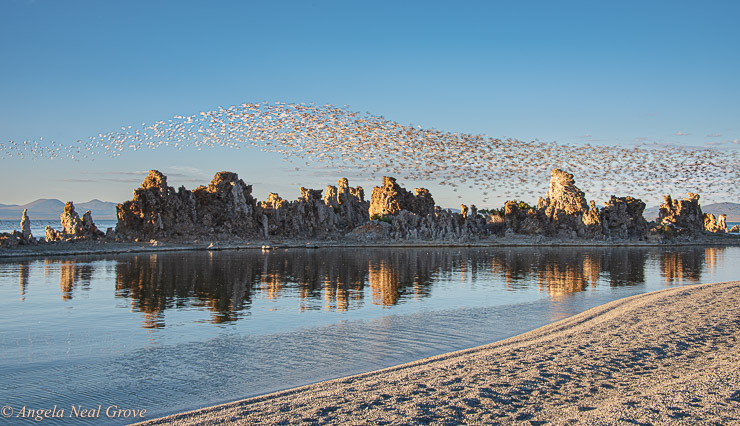
Mono Lake Star Trek
My summer trip was to capture the Milky Way, a Mono Lake Star Trek, but it is hard not to include something on the uniqueness of Mono Lake. So I decided to include some of my daytime images.
Then, as I was completing this piece, on August 24 PBS published this short video on Mono Lake and I felt I should include it. The lake and ecosystem is so unique and so beautiful. It was saved by a determined band of volunteers. Without them there would have been an ecological catastrophe. The lake would have dried up as water feeding into it was diverted to Los Angeles. That is no longer the case. The lake was saved in 1994 by the State Water Board and it is now one of the best protected saline lakes in the world. The lake has a dedicated water right. It will continue to be a sanctuary for birds and an inspiration to photographers.
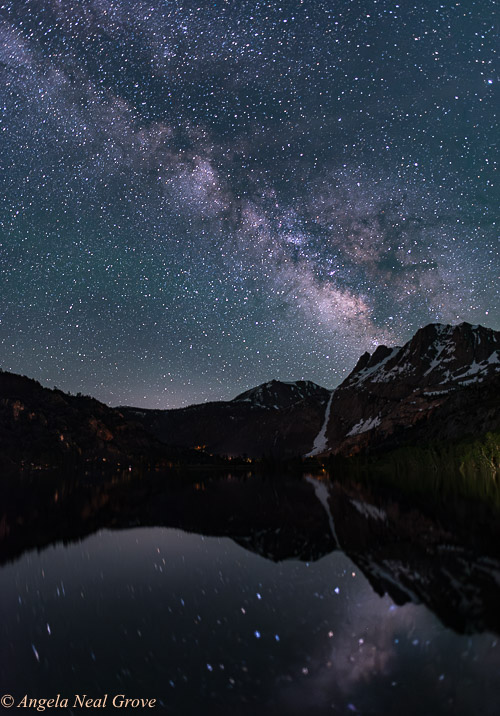
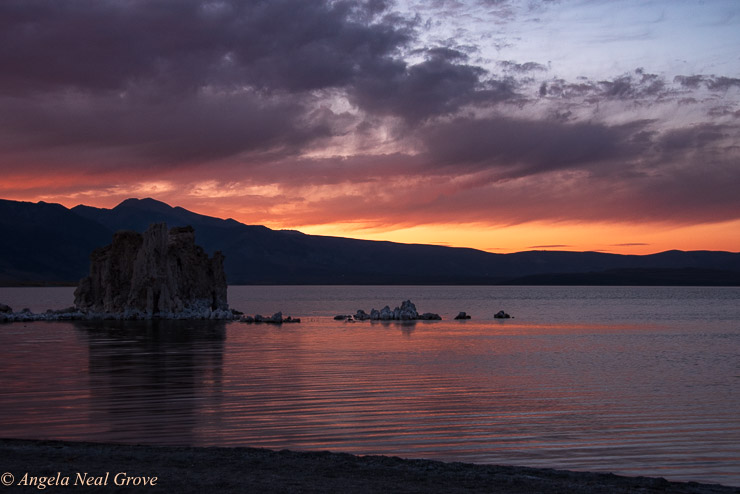
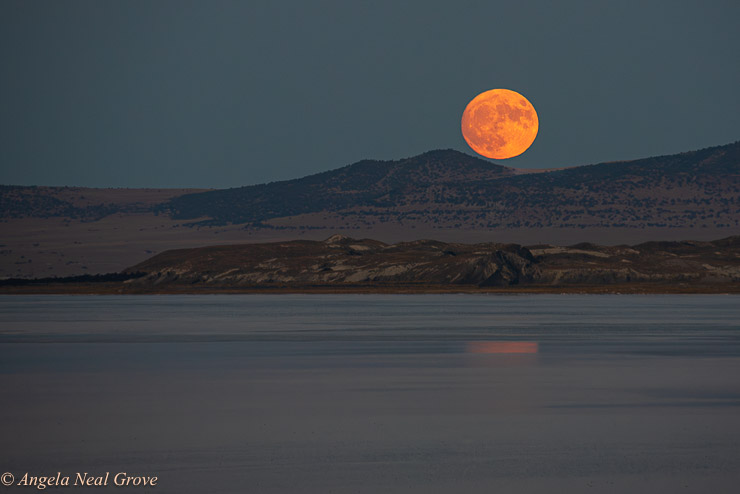
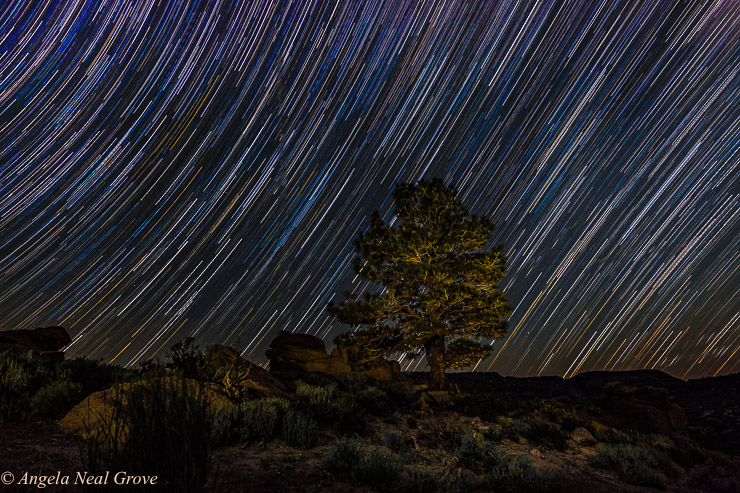
U r AMAZING dear Angela. Wow!!! Xxx
Just. feel. these. compete. with. your. best
I. am in. touch. with. Netjets. for. a way. to. comute up. there. to. get. lots in. the. beauty
for special. picnics. weget you. free snacks
and. a cut. of. the. tickets. return. It is. very
quiet here after our friends went. back
to. S.F. Quiet. indeed. see you. soon. I. hope
lots. to. talk. about. ha. ha. love. from. Me
and. Maggie. lots. of. hopeGordon
Fantastic images and great story. Thanks so much for the opportunity to see this and read the knowledgable information.
Angela— this is absolutely so beautiful and fascinating— wonderful history and educating—-thank you so much!!!
Dear Dear Angela, you have totally out yourseLf!! What pictures!! What a blog!!
Van Gogh skies, unreal. Thankyou for shar the blog,
XXOX, mag
Breathtaking photographs